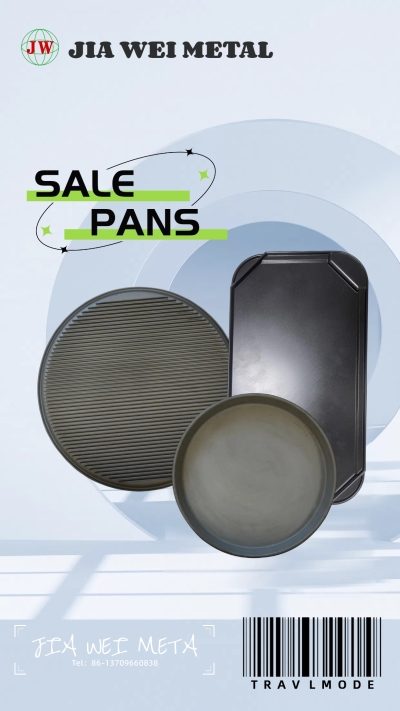
"Cutting - Edge Die - Casting Molds: Revolutionizing Production Efficiency
2025-03-19 15:30
In the dynamic world of manufacturing, the die-casting industry is constantly evolving to meet the ever - increasing demands for high - quality, precision components. Cutting- edge die - casting moldsare emerging as a game - changer, significantly revolutionizing production efficiency.
The Significance of Die - Casting Molds
Die - casting is a manufacturing process in which molten metal is forced under high pressure into a mold cavity. The mold, acting as a negative impression of the desired part, plays a crucial role in determining the final product's shape, size, and quality. High-quality die- casting molds are essential for producing complex, accurate, and durable components with minimal post - processing requirements.
Innovations in Die - Casting Mold Technology
Advanced Materials
One of the key factors contributing to the revolution in die-casting moldsis the use of advanced materials. Manufacturers are now employing high - strength, heat - resistant alloys for mold construction. These materials can withstand the extreme temperatures and pressures during the die-casting process, resulting in longer-lasting molds. For example, tungsten-based alloys are being used in critical areas of the mold, such as the cavity and core, to enhance wear resistance and dimensional stability. This not only reduces the frequency of mold replacements but also improves the overall productivity as there are fewer production interruptions for mold maintenance.
Precision Manufacturing Techniques
Modern manufacturing techniques, such as electrical discharge machining (EDM) and computer - numerical control (CNC) machining, have enabled the creation of highly intricate mold designs. EDM allows for the precise shaping of molds with complex geometries, including undercuts and fine details, which were previously difficult to achieve. CNC machining, on the other hand, ensures tight tolerances, resulting in molds that produce parts with exceptional accuracy. This level of precision reduces the need for secondary machining operations, saving both time and cost.
Integrated Cooling Systems
Efficient cooling is vital in die - casting to ensure rapid solidification of the molten metal and prevent defects. New - generation die-casting molds are equipped with integrated cooling systems. These systems use advanced conformal cooling channels that are designed to follow the shape of the mold cavity. This allows for more uniform cooling, reducing cycle times and improving the quality of the cast parts. By optimizing the cooling process, manufacturers can produce more parts in a shorter period, thereby increasing production efficiency.
Impact on Production Efficiency
Shorter Cycle Times
The combination of advanced materials, precision manufacturing, and integrated cooling systems has led to a significant reduction in die - casting cycle times. With faster solidification of the molten metal and quicker mold turnover, manufacturers can produce a higher number of parts per hour. For instance, in a typical automotive component production line, the use of cutting - edge die - casting molds has reduced the cycle time from 30 seconds to 20 seconds per part. This increase in production speed directly translates to higher output and improved productivity.
Higher Yield Rates
The enhanced precision and quality of parts produced by modern die - casting molds result in higher yield rates. Fewer defective parts are produced, reducing material waste and rework. In the past, traditional molds might have a yield rate of around 80%, meaning 20% of the parts produced were scrapped due to defects. However, with the latest mold technology, yield rates can reach up to 95% or even higher. This not only saves costs associated with wasted materials but also frees up resources for productive use.
Cost Savings
Although the initial investment in cutting - edge die - casting molds may be higher compared to traditional molds, the long - term cost savings are substantial. The reduction in cycle times, higher yield rates, and decreased mold maintenance requirements all contribute to lower production costs per part. Additionally, the ability to produce complex parts in a single die - casting operation, rather than multiple assembly steps, further reduces costs. For example, a manufacturer of electronic device housings found that by switching to advanced die - casting molds, they were able to reduce their overall production costs by 25% over a year.
Future Outlook
As technology continues to advance, the die - casting mold industry is expected to see even more innovations. The integration of artificial intelligence and machine learning into mold design and production processes is on the horizon. These technologies can predict mold wear, optimize cooling parameters in real - time, and further improve production efficiency. Additionally, the development of new materials with even better performance characteristics will continue to drive the evolution of die - casting molds.
In conclusion, cutting - edge die - casting molds are revolutionizing production efficiency in the manufacturing industry. Through the use of advanced materials, precision manufacturing techniques, and integrated cooling systems, they are enabling shorter cycle times, higher yield rates, and significant cost savings. As the industry looks towards the future, the potential for further advancements in die - casting mold technology is immense, promising continued growth and improvement in the manufacturing sector.
Get the latest price? We'll respond as soon as possible(within 12 hours)












